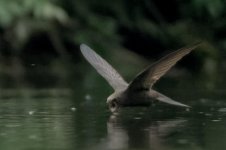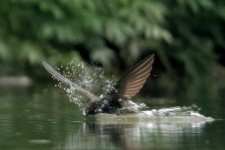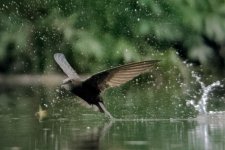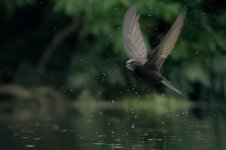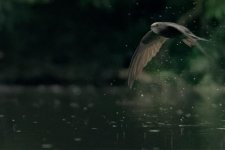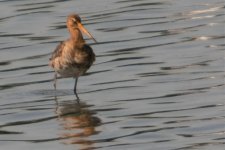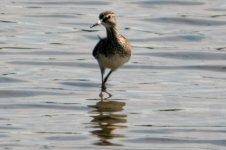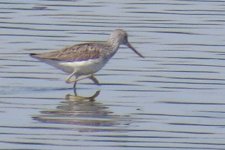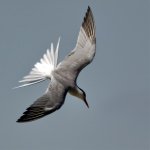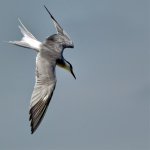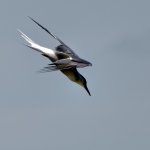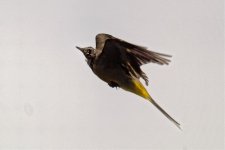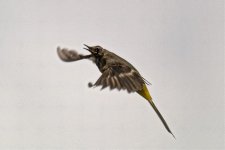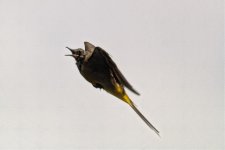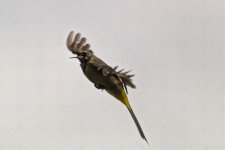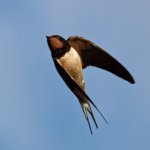HermitIbis
Well-known member
A swift in the local park
There is a new tool in my toolbox: the V3. Is it better for Small BIF than the V2? In some respects, yes - superior EVF, better for BIF "over water". For other situations I'd still prefer the V2 with its larger central focus point. A high flying raptor is a pain with the V3, just an example. So I cannot recommend the V3 as a budget BIF solution. Someone looking for a fighting chance in almost every BIF scenario would still get my advise that the V2 + CX 70-300 is hard to beat, ratio-wise: BIF for buck. Not as good as a D500, yet more affordable.
OTOH, if you regard the N1 as a system operating "out of the box" without much need to tweak settings, it makes sense to own various bodies. I love the V2, but it's good to have the J5 and the V3. AF is king, unless you face a case where MF works better. A large center point is nice, unless you want a smaller one. More points to capture a high-contrast BIF? Just swap V2 -->V3.
Here is a case where I had struggled with the V2, and where the V3 was a nice improvement. Shot in the local park in a shady area => iso 3200. I felt 1/1250 seconds was enough, as the Common swift is a glider, not a flutterer. I used 20fps - not such a big difference to the 15fps of the V2, but welcome. In the first of the ten shots the swift starts to open its mouth. The five below are numbers 4-6, 8 and 9 of the series. Heavy crops, <25% of the original. So why do I believe I could not have got the same result with a V2? The main reason is the better EVF. In the shadow it was hard to see the arriving swifts.
Comments welcome. Don't hesitate to post your shots with another camera or brand. Birdforum is a relaxed place, and I guess most members recognize that the camera is just a tool in our toolbox. Fieldcraft, strategy and sheer luck are often more important.
There is a new tool in my toolbox: the V3. Is it better for Small BIF than the V2? In some respects, yes - superior EVF, better for BIF "over water". For other situations I'd still prefer the V2 with its larger central focus point. A high flying raptor is a pain with the V3, just an example. So I cannot recommend the V3 as a budget BIF solution. Someone looking for a fighting chance in almost every BIF scenario would still get my advise that the V2 + CX 70-300 is hard to beat, ratio-wise: BIF for buck. Not as good as a D500, yet more affordable.
OTOH, if you regard the N1 as a system operating "out of the box" without much need to tweak settings, it makes sense to own various bodies. I love the V2, but it's good to have the J5 and the V3. AF is king, unless you face a case where MF works better. A large center point is nice, unless you want a smaller one. More points to capture a high-contrast BIF? Just swap V2 -->V3.
Here is a case where I had struggled with the V2, and where the V3 was a nice improvement. Shot in the local park in a shady area => iso 3200. I felt 1/1250 seconds was enough, as the Common swift is a glider, not a flutterer. I used 20fps - not such a big difference to the 15fps of the V2, but welcome. In the first of the ten shots the swift starts to open its mouth. The five below are numbers 4-6, 8 and 9 of the series. Heavy crops, <25% of the original. So why do I believe I could not have got the same result with a V2? The main reason is the better EVF. In the shadow it was hard to see the arriving swifts.
Comments welcome. Don't hesitate to post your shots with another camera or brand. Birdforum is a relaxed place, and I guess most members recognize that the camera is just a tool in our toolbox. Fieldcraft, strategy and sheer luck are often more important.
Attachments
Last edited:




